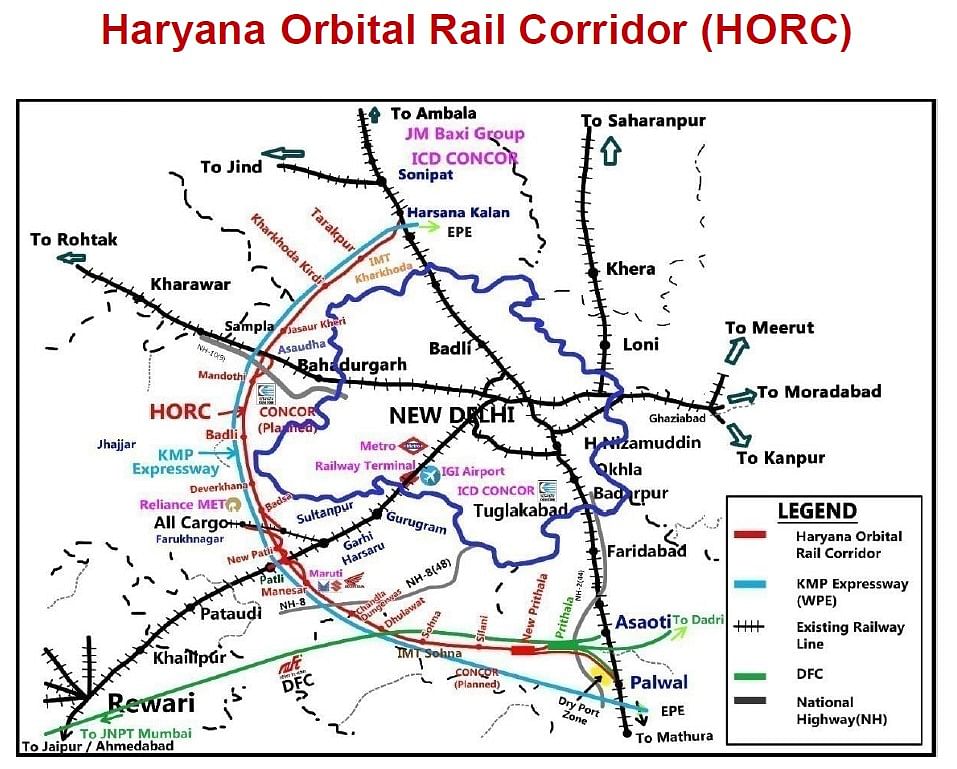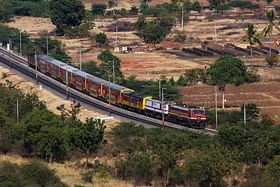The construction of the double tunnel and viaduct will require the latest engineering methods and technologies and will contribute to the future development of the region.
The Haryana Rail Infrastructure Development Corporation (HRIDC) has announced plans to construct a double tunnel through the Aravalis, connecting Sohna and Nuh.
The tunnels, measuring 4.7km long, will accommodate double-decker goods and passenger trains, as part of the Haryana Orbital Rail Corridor (HORC). The orbital rail corridor will be built along the Kundli-Manesar-Palwal (KMP) Expressway.
This will be the country’s first railway tunnel for double-decker trains and will connect to the rest of the corridor via a 3.5km long and 25-metre high viaduct.
Rajesh Agarwal, managing director of HRIDC, stated that the twin tunnels and viaduct present complex engineering challenges given their location in the Aravalis. “Only after determining all the technical parameters, tenders will be invited for them by the end of this year. The work is expected to be completed by 2026,” he said, reports Times of India
Recently, HRIDC officials and members of the railway board met to discuss what engineering modes and technology will be used for constructing the double tunnel and viaduct, and the possible challenges that may emerge during the construction work.
The Haryana government and the Ministry of Railways have jointly initiated the rail corridor project, which was approved by the state cabinet in July 2019.
The Cabinet Committee on Economic Affairs, chaired by the Prime Minister, gave its approval in September 2020. The Ministry of Railways sanctioned work on the semi-high-speed line for double-stack container freight operations between Palwal and Sonipat.
The rail corridor will primarily cater to the industrial centres of South Haryana such as Manesar and Sohna, as well as Kharkhoda in Sonipat, which is the automobile hub of the future with Maruti setting up its new manufacturing plant there.
Sohna will be a significant junction for transport operations because the orbital rail will intersect with the Dedicated Freight Corridor (DFC) here. Passenger trains operating on the corridor can have a maximum speed of 160 kmph, while freight trains can travel at a speed of 100 kmph.
“The track will be suitable for the operation of trains like the Vande Bharat Express,” said Agarwal.
Decongesting NCR
HORC is a new electrified double broad-gauge (BG) rail line connecting Harsana Kalan (Sonipat) and Asaoti (Palwal) in Haryana through 17 stations along the Kundli-Manesar-Palwal (KMP)/Western Peripheral Expressway.
The rail corridor proposes to decongest the NCR by diverting rail traffic not headed to the national capital, developing multi-modal logistic hubs to facilitate the shifting of goods sheds from Delhi, and running a Shatabdi-like train from Gurgaon to Chandigarh, bypassing Delhi.

It will also enable affordable and quick commuting alternatives from Gurgaon, Sohna, Manesar, Farrukhnagar, Kharkhoda and Sonipat.
The rail corridor project provides good connectivity and logistical solutions for various industrial hubs, including Kharkhoda in Sonipat, where Maruti has established its new manufacturing plant.
The project has been notified as special railway project by the central government in 2020 and is being funded by Asian Infrastructure Investment Bank (AIIB). AIIB will provide a sovereign guaranteed loan of $475 million to the project.
The foundation stone of the project was laid on 27 October 2022 by Union Home Minister Amit Shah and is expected to be ready by FY 2025-26.
Once completed, the project will provide interchange facilities to the Indian Railways’ main radial routes of Delhi-Ambala and Delhi-Rohtak, the dedicated freight corridors (DFC) at Pirthala (near Palwal) and the 164 km Delhi-SNB-Alwar RRTs line at Panchgaon Station.
The rail corridor project is a significant step towards promoting sustainable development and effective resource utilisation, providing not only efficient transportation solutions but also opportunities for socio-economic development.
The construction of the double tunnel and viaduct will require the latest engineering methods and technologies and will contribute to the future development of the region.
The project is expected to enhance the capacity and efficiency of transport systems in the state, stimulating growth in the industrial and agricultural sectors.


